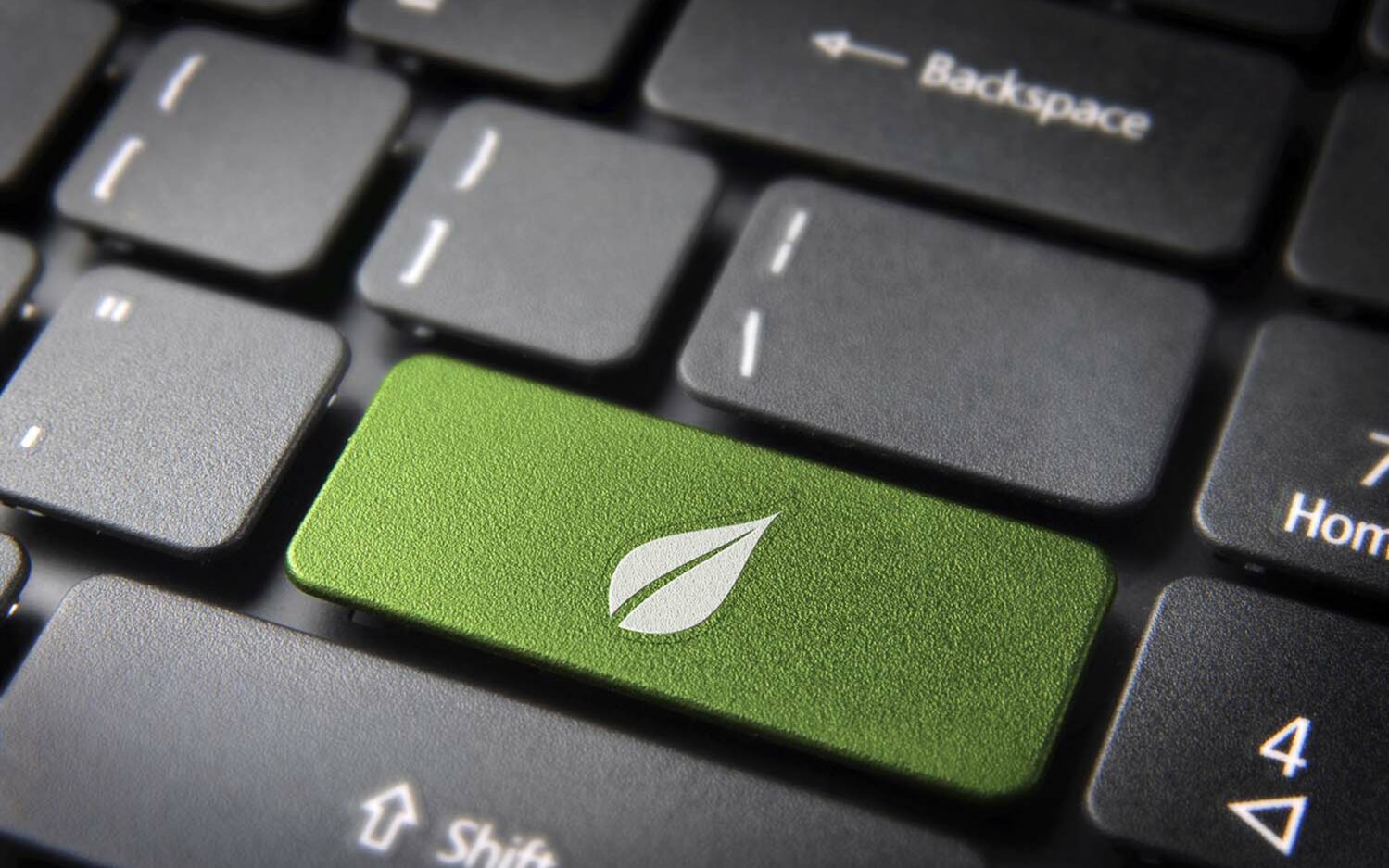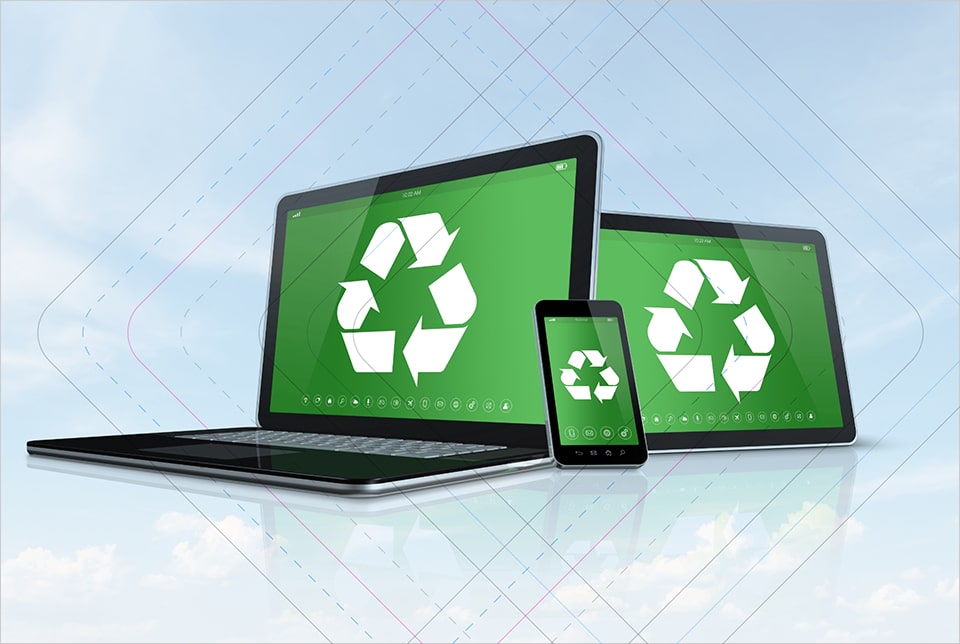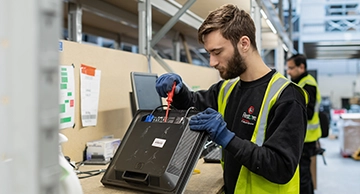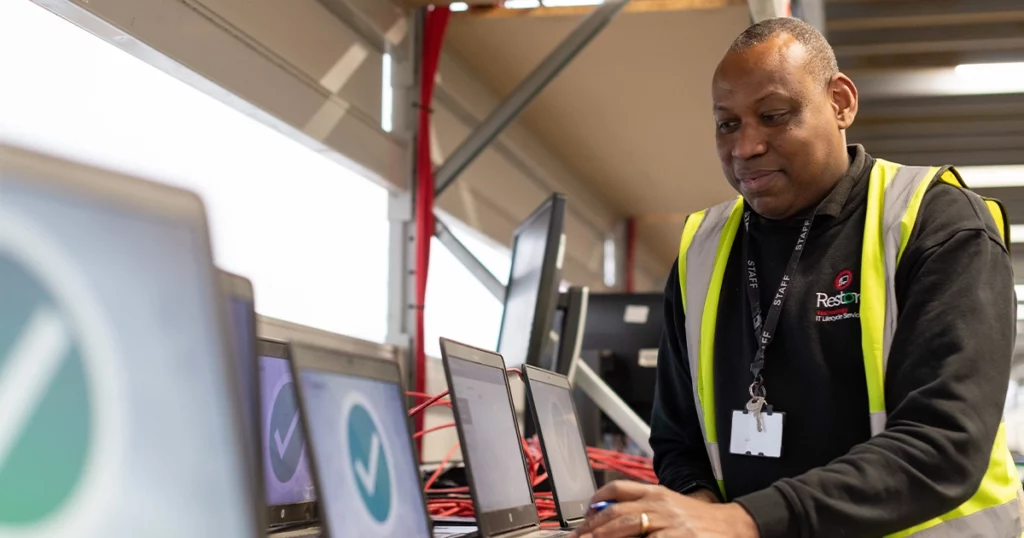Our digital lives keep businesses ticking, but there's a hidden environmental cost we can't afford to ignore.
Did you know that information and communication technology (ICT) accounts for 1.8 – 3.9% of global greenhouse gas emissions, roughly the same as the entire aviation sector? That's pretty staggering. Add to that the 62 million tonnes of e-waste generated globally in 2023, and you quickly realise why IT sustainability is essential for the future.Building a solid, sustainable IT strategy boosts your company's efficiency and brand reputation while minimising harmful emissions and waste. So, to get you started on creating an IT sustainability strategy, let's take a look at some practical steps and real-world examples to help your business thrive sustainably.

Why IT Sustainability Matters
Reducing Environmental Impact
Data centres consumed around 460 TWh of electricity in 2022 alone, and the International Energy Agency warns that this could more than double by 2026 if we don’t change course.
Meeting Regulations
With new standards like the EU’s Corporate Sustainability Reporting Directive and the UK’s Streamlined Energy & Carbon Reporting, compliance is crucial in terms of sustainability reporting requirements.
Impressing Investors and Customers
Surprisingly, just 43% of executives actually know their organisation’s IT footprint (the reach and effects of their IT use in terms of space, energy and carbon emissions), and only 6% genuinely reap the benefits of mature sustainable IT programmes. Neglecting IT sustainability now could mean higher costs and lost opportunities later.
The Benefits of an IT Sustainability Strategy

A key metric for data centres is Power Usage Effectiveness (PUE), which measures how efficiently data centres use energy. Most older data centres have a PUE of around 1.56. This means, on average, about 56% of the energy consumed isn’t directly used for computing but instead powers cooling and other infrastructure. Newer, advanced designs with a PUE of 1.3 or better can significantly reduce waste. This means that more energy expenditure directly contributes to core IT functions, slashing your electricity bills substantially.

IT remarketing extends the useful lifespan of your equipment, cutting down on e-waste and the need for new production, both of which benefit the environment. Moreover, repurposing older devices can help your organisation recoup valuable funds through resale, turning what was once a cost into a potential revenue source.

Sustainability is now a key criteria in many procurement processes and tenders. Organisations increasingly evaluate potential suppliers based on their green credentials, environmental impact, and social responsibility. By demonstrating robust and credible IT sustainability practices, you can position your company as an attractive, forward-thinking partner, often tipping decisions in your favour.

Transitioning to sustainable IT does come with its challenges. Older, legacy equipment often isn’t as energy-efficient, and replacing or upgrading it involves upfront investment. Data inconsistency and gaps in reporting can also complicate efforts to accurately assess your true environmental impact. Additionally, many businesses lack specialised sustainability expertise, requiring external advice or internal training. This can be circumvented in the following ways; offsetting the cost of upgrades with future savings due to energy efficiency, conducting internal training, and utilising the experience and expertise of organisations like Restore Technology to smooth the transition.

What is an IT Sustainability Strategy?
Think of an IT sustainability strategy as a roadmap that outlines how your organisation minimises environmental impacts across your entire tech lifecycle, from investing in new technology and running data centres to responsibly recycling old equipment. It sets clear goals, assigns ownership, and measures continuous improvement.
Picking the Right Metrics
Effective sustainability needs measurable goals. Here's what you might track:
PUE / CUE (Power & Carbon Usage Effectiveness)
Benchmarks the efficiency of energy use within your facilities.

Device Circularity Rate
The percentage of devices your organisation has refurbished, resold, or responsibly recycled.

Asset Utilisation
Identifies unused or underused equipment for consolidation or virtualisation.

Supplier Sustainability Scores
Rates your suppliers' environmental responsibility based on recognised standards.

Employee Behaviour Indicators
Tracks simple yet impactful employee actions like enabling power-saving modes.


Real-Life Inspiration
- Google: Achieved 100% renewable energy since 2017, pairing every new data centre with green energy contracts.
- NatWest Group: Reduced desktop fleet emissions by 35% simply by choosing energy-efficient hardware and extending warranties.
- NHS Digital: Virtualised 90% of their servers, freeing physical space and dramatically reducing their cooling requirements.
Planning Your Sustainable Journey

Begin by accurately measuring your current energy usage, e-waste production volumes, and supplier sustainability impacts. You can use these metrics to start properly auditing the environmental footprint of your entire IT infrastructure, setting a solid foundation for informed, targeted improvements.

Quickly realise visible improvements by activating built-in power-saving features on all equipment, systematically removing redundant servers, and initiating pilot programmes for remarketing or refurbishing older assets. These immediate actions deliver quick results and build momentum within your organisation.

Deepen your sustainability efforts by implementing advanced cooling retrofits in your data centres, shifting to renewable energy tariffs, and integrating robust sustainability clauses into all future vendor contracts. These strategic steps ensure sustained long-term impacts, embedding sustainability into your core operational processes.

Embrace cutting-edge technologies like AI-driven workload balancing, which optimally distributes computing tasks to maximise efficiency, and circular-design hardware initiatives to promote product longevity and easy recyclability.

Let's Move Forward Together
Sustainable IT isn’t just a project, it’s a mindset. Every watt saved, device recycled, and decision made contributes to a greener world. By embedding clear metrics, phased plans, and a culture of sustainability, you’ll meet your environmental goals and build resilience.
Ready to make your sustainability ambitions a reality? Restore Technology has responsibly managed over 21 million devices, offering secure data destruction, certified recycling, and profitable remarketing. Let’s talk today, together, we can make your IT greener, smarter, and more sustainable.
Our customer services team is well versed in government agency needs that go above and beyond commercial interests (although we’re well versed in those, too!).
To discuss your organisation’s data destruction needs, at your workplace or ours, give them a call on 0333 060 1 920. We look forward to showing you why we are market leaders in everything that we do.
Contact us


